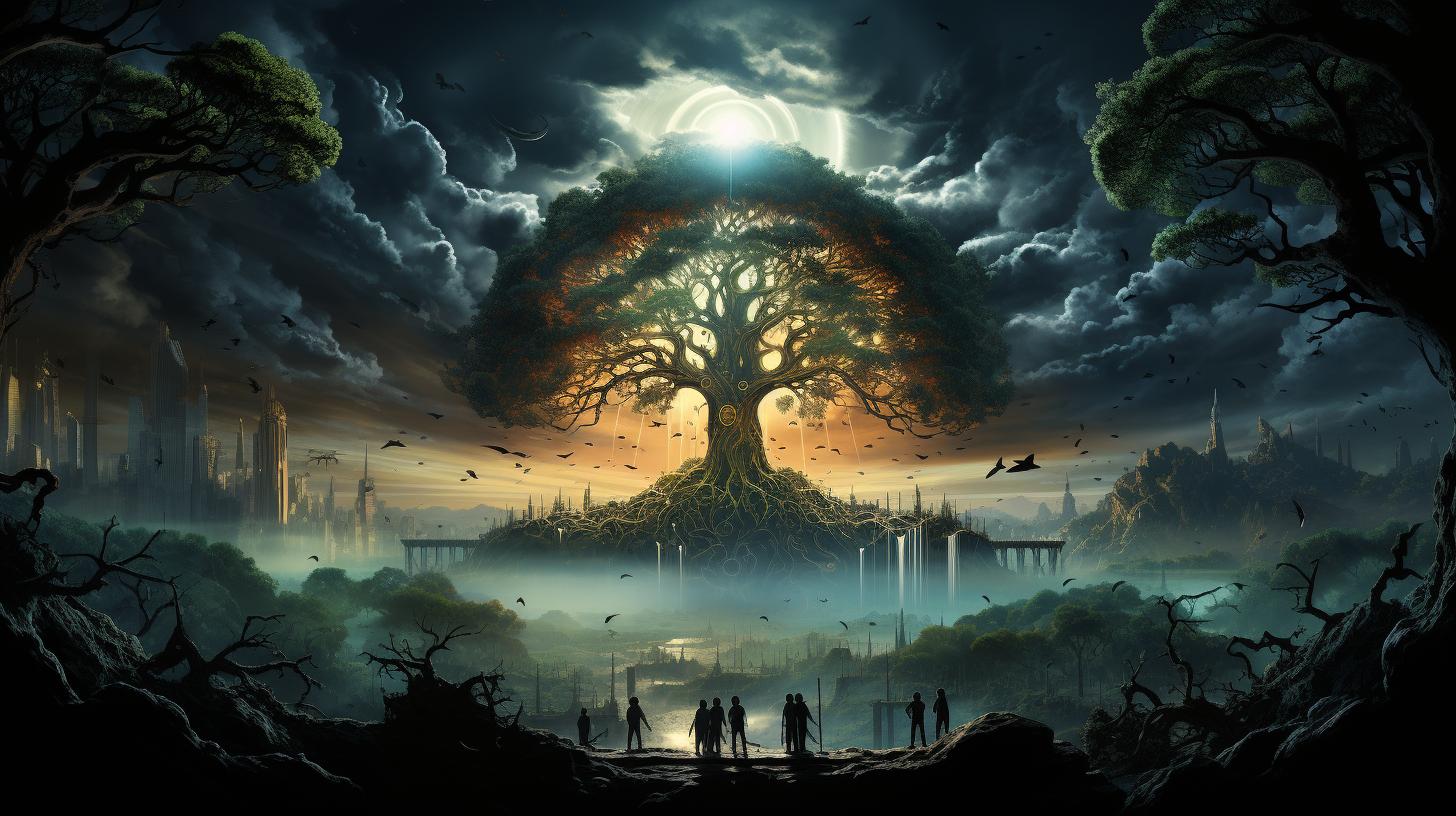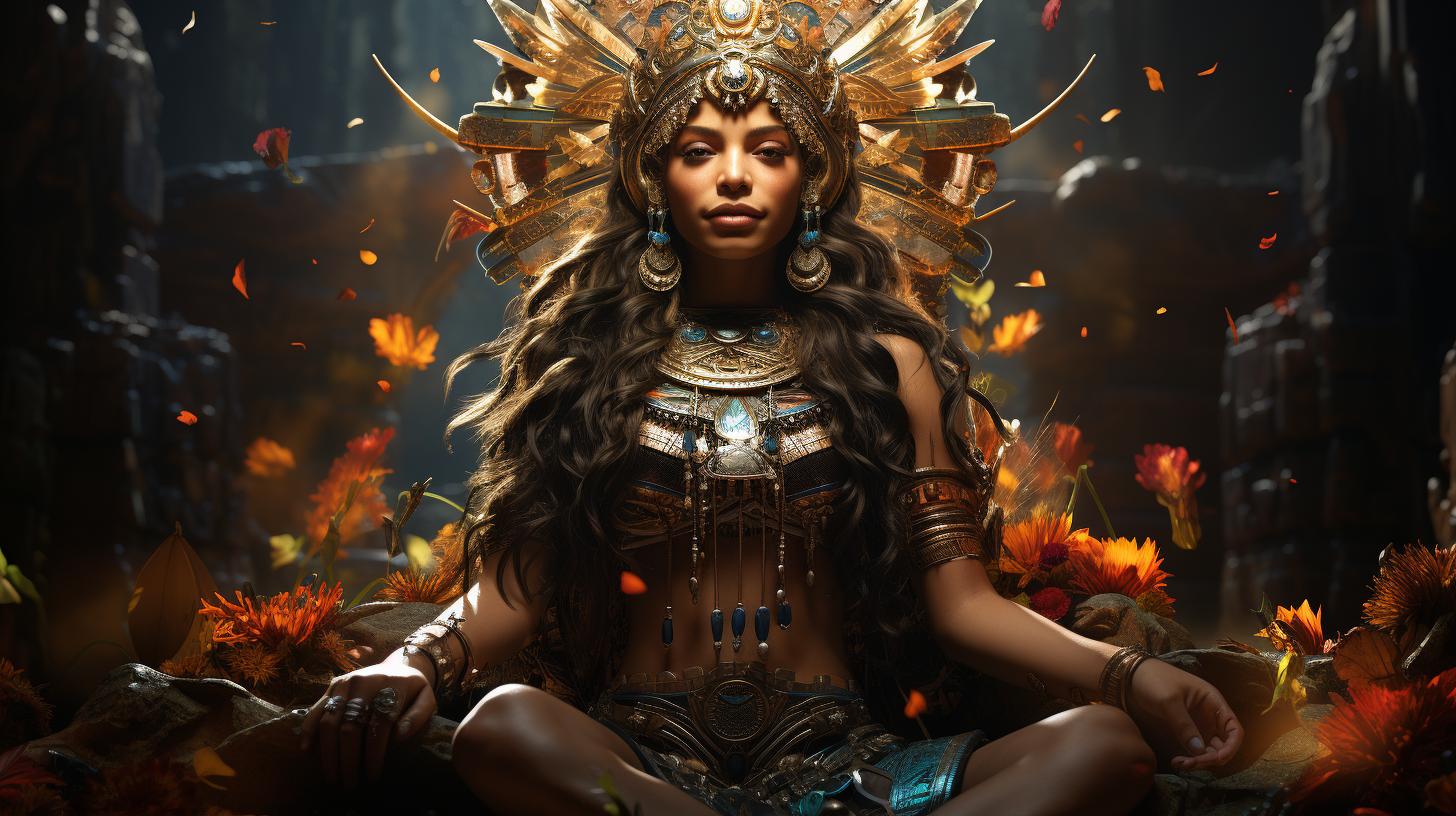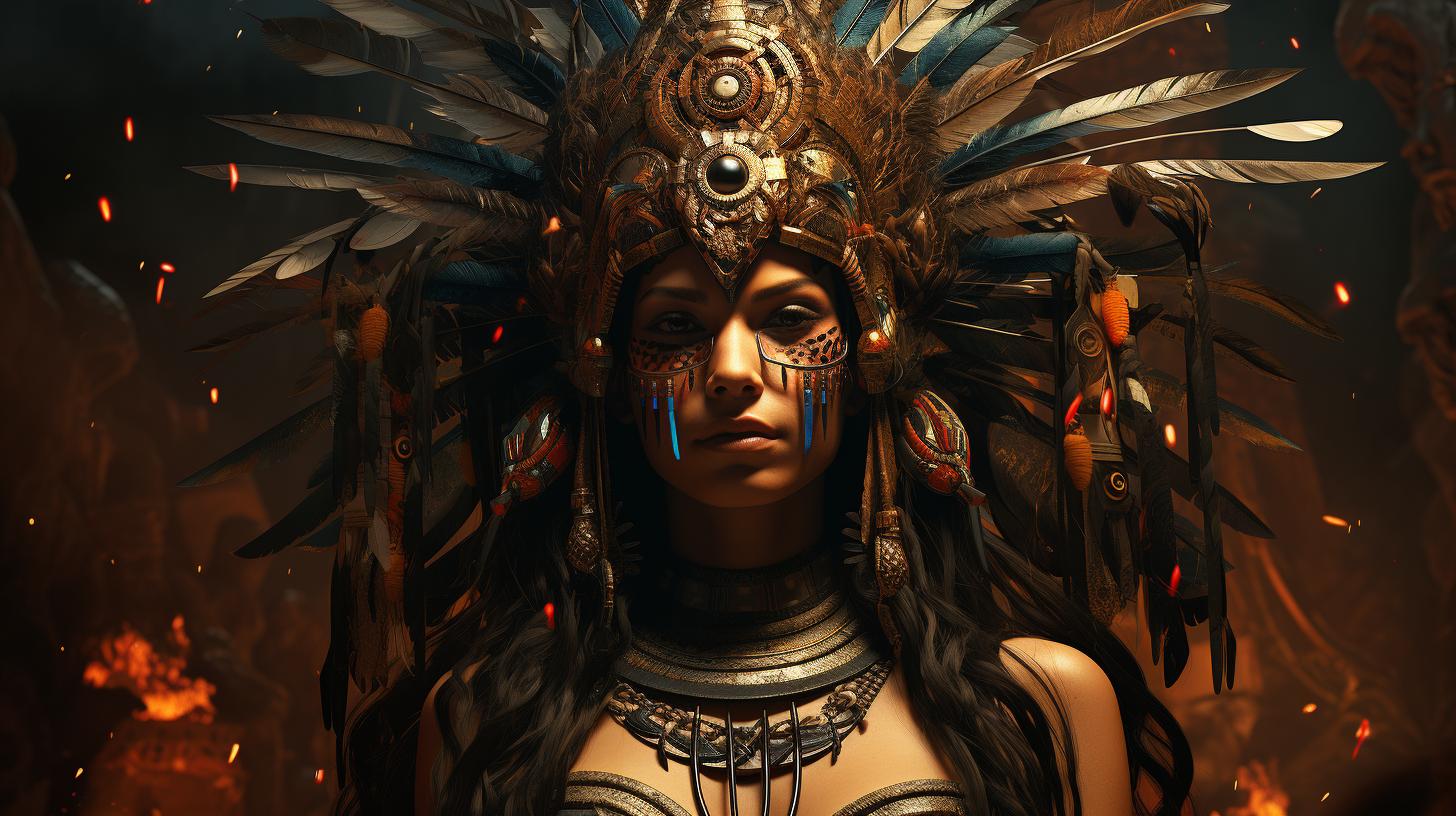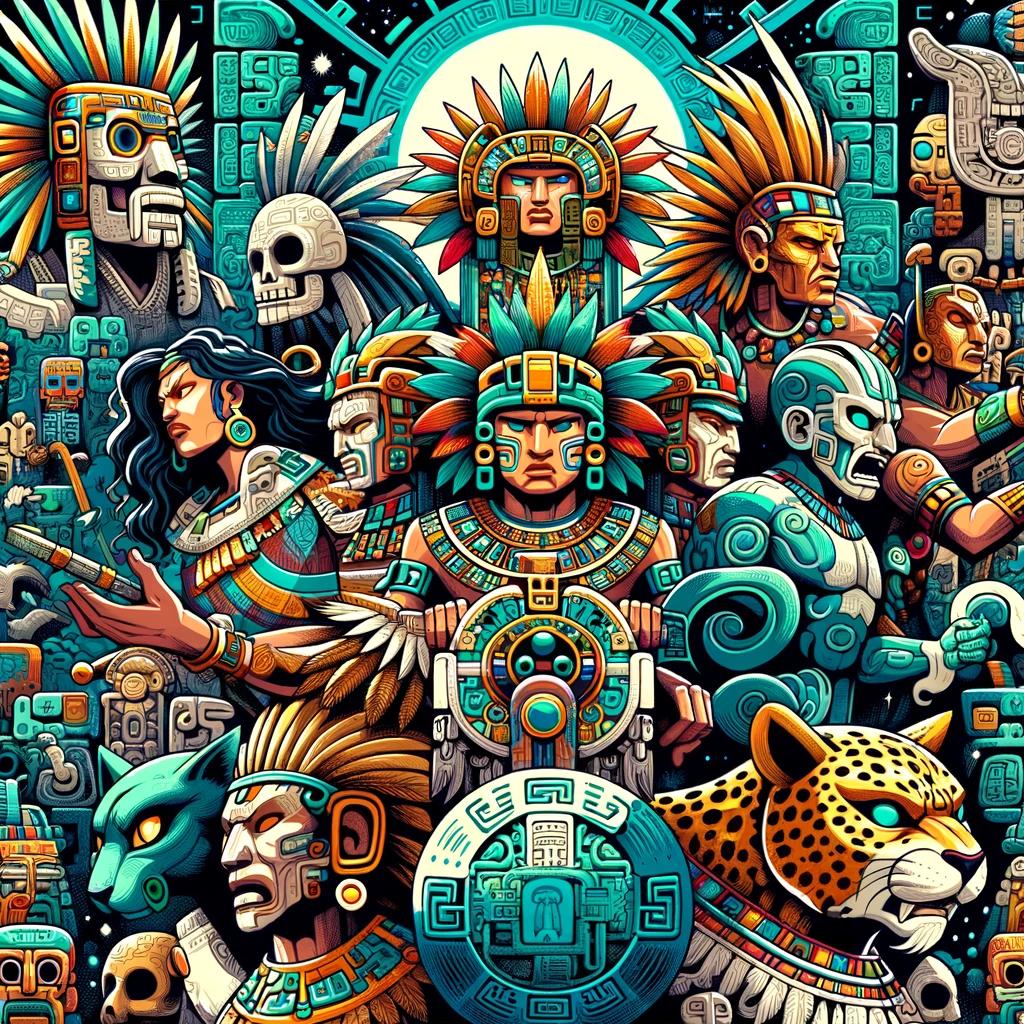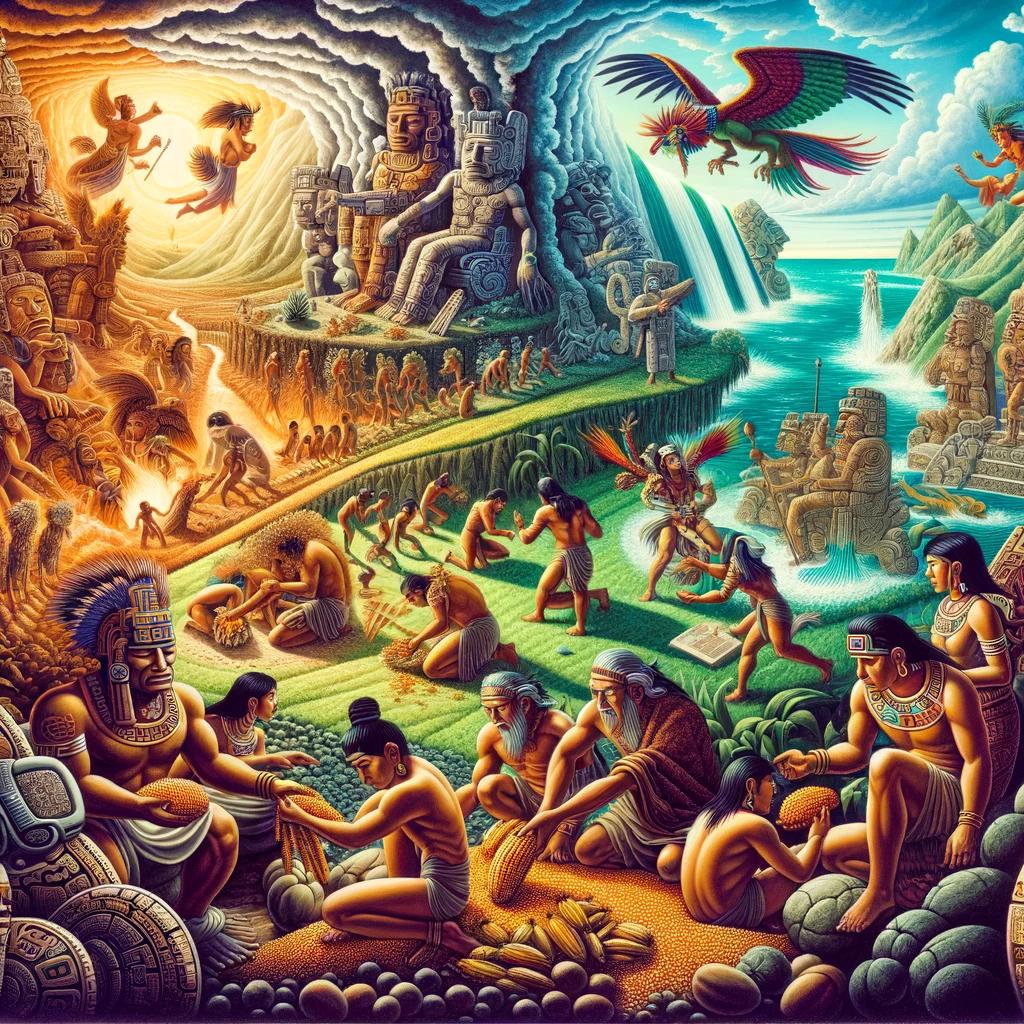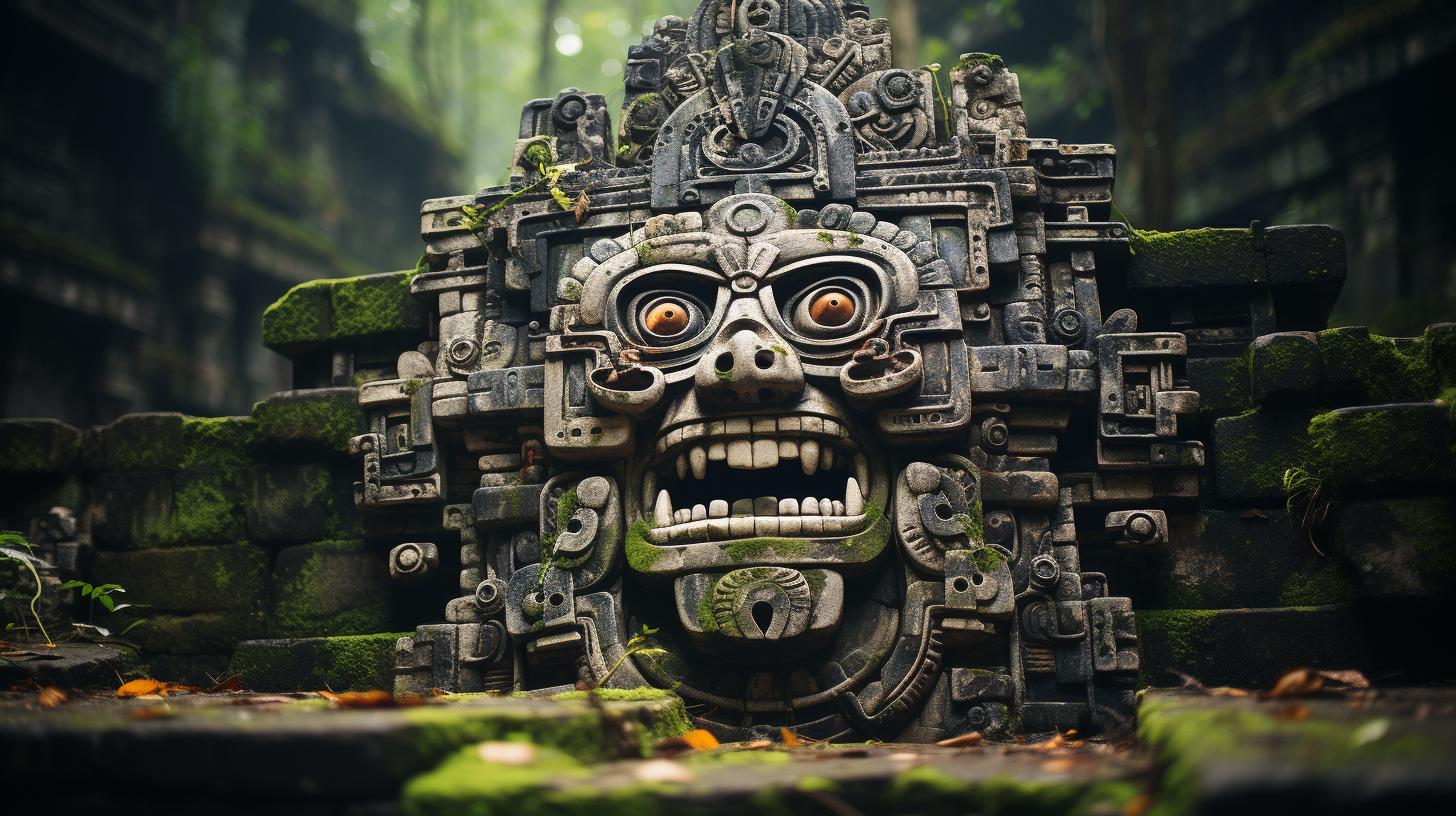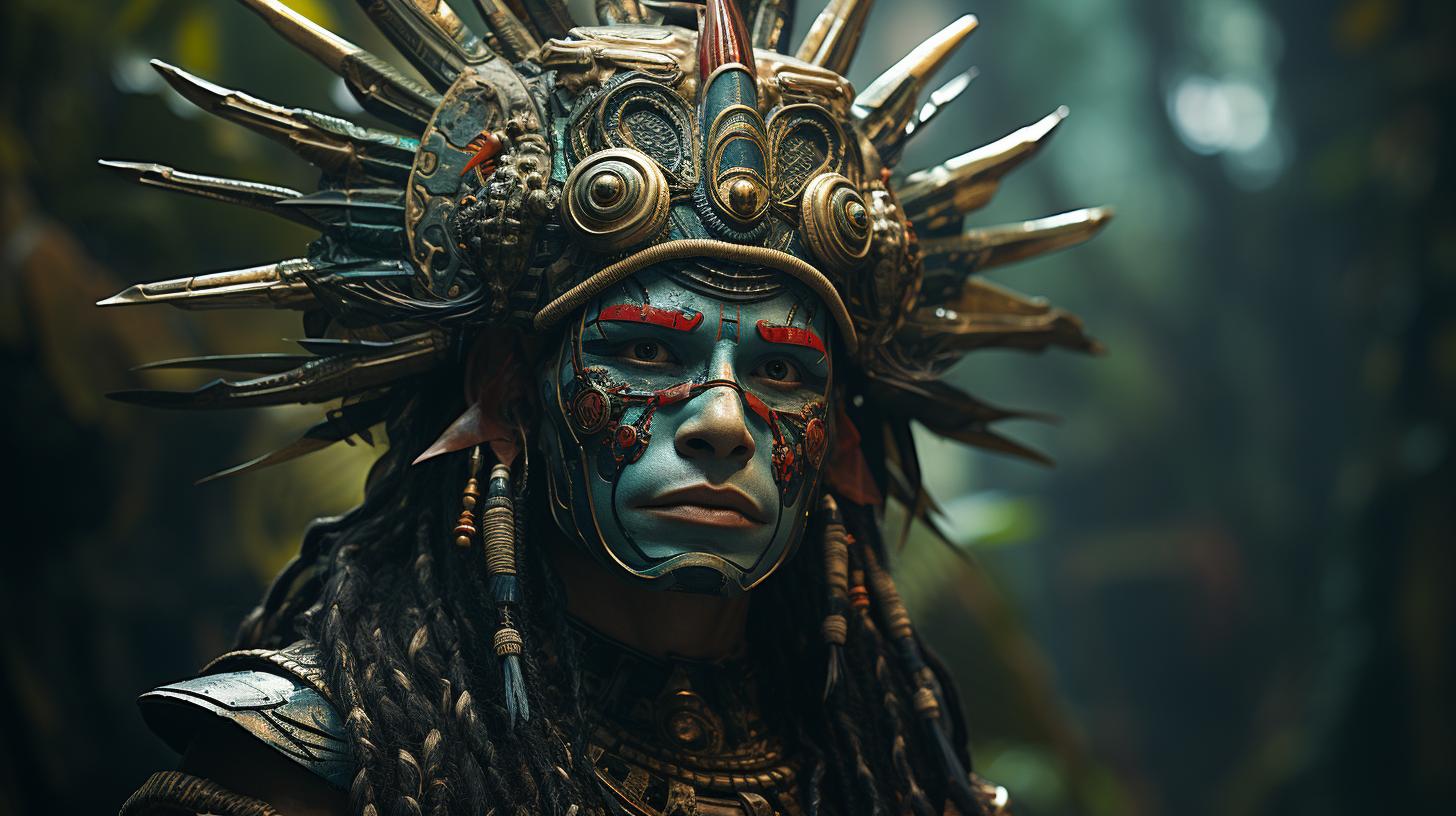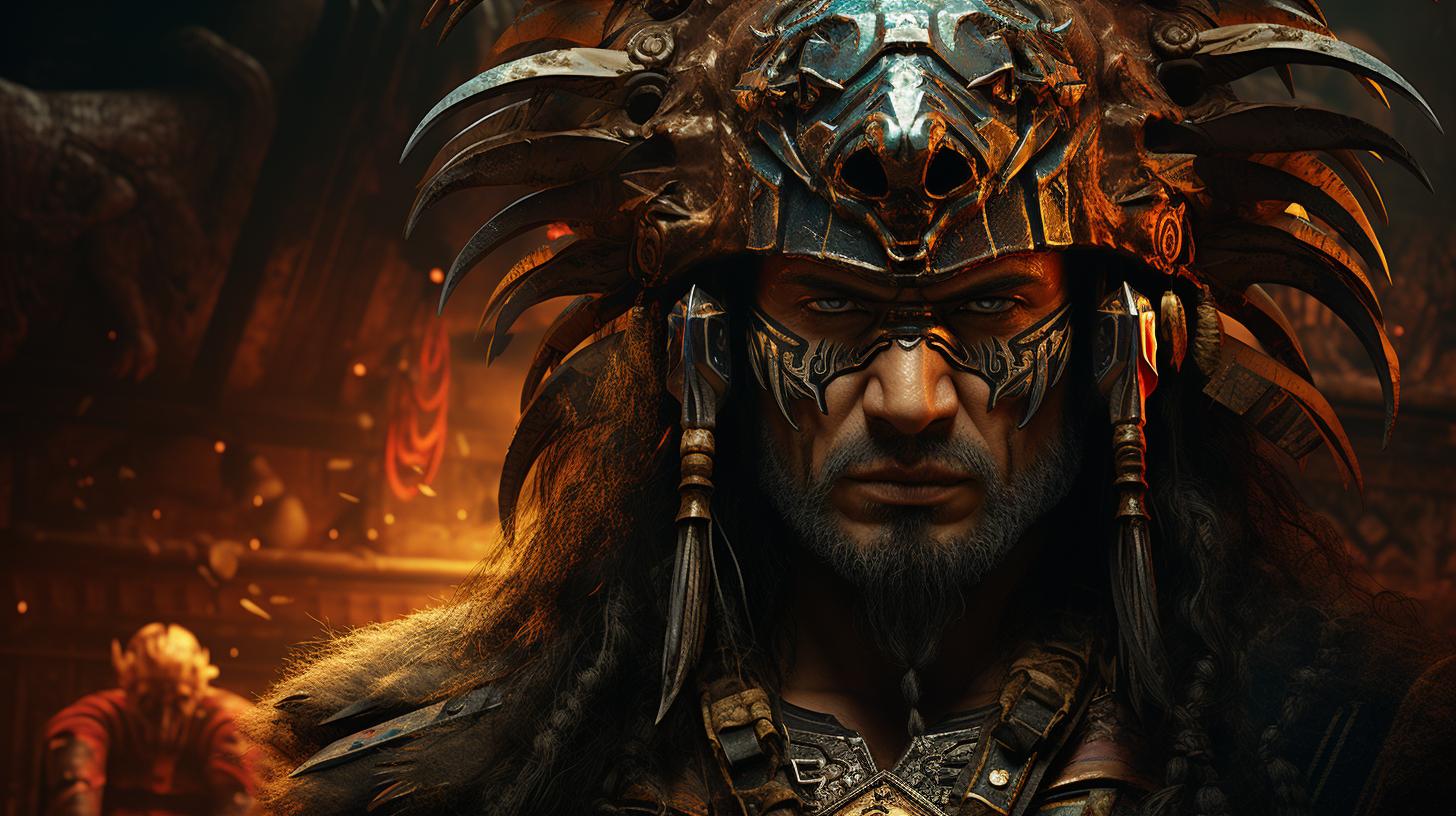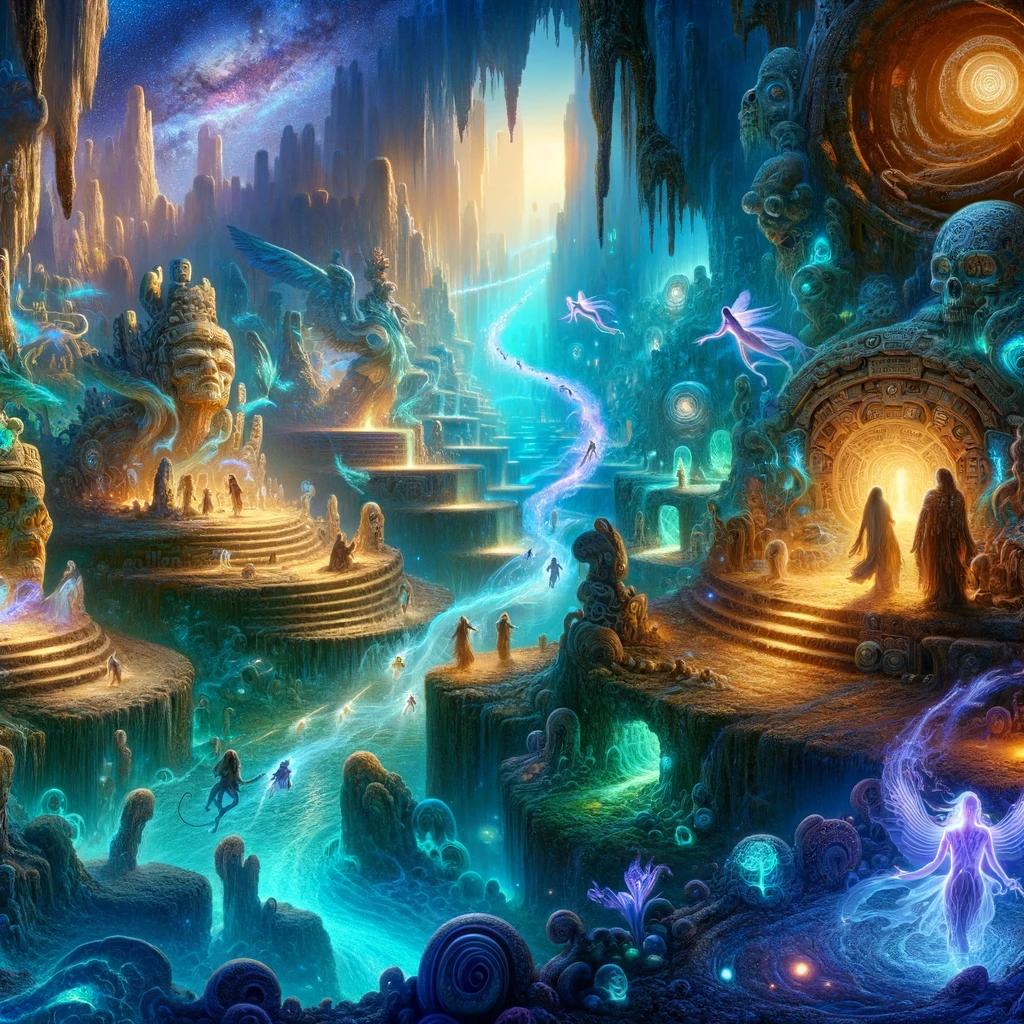Yaxche Mayan God: Exploring the Sacred Tree in Maya Culture
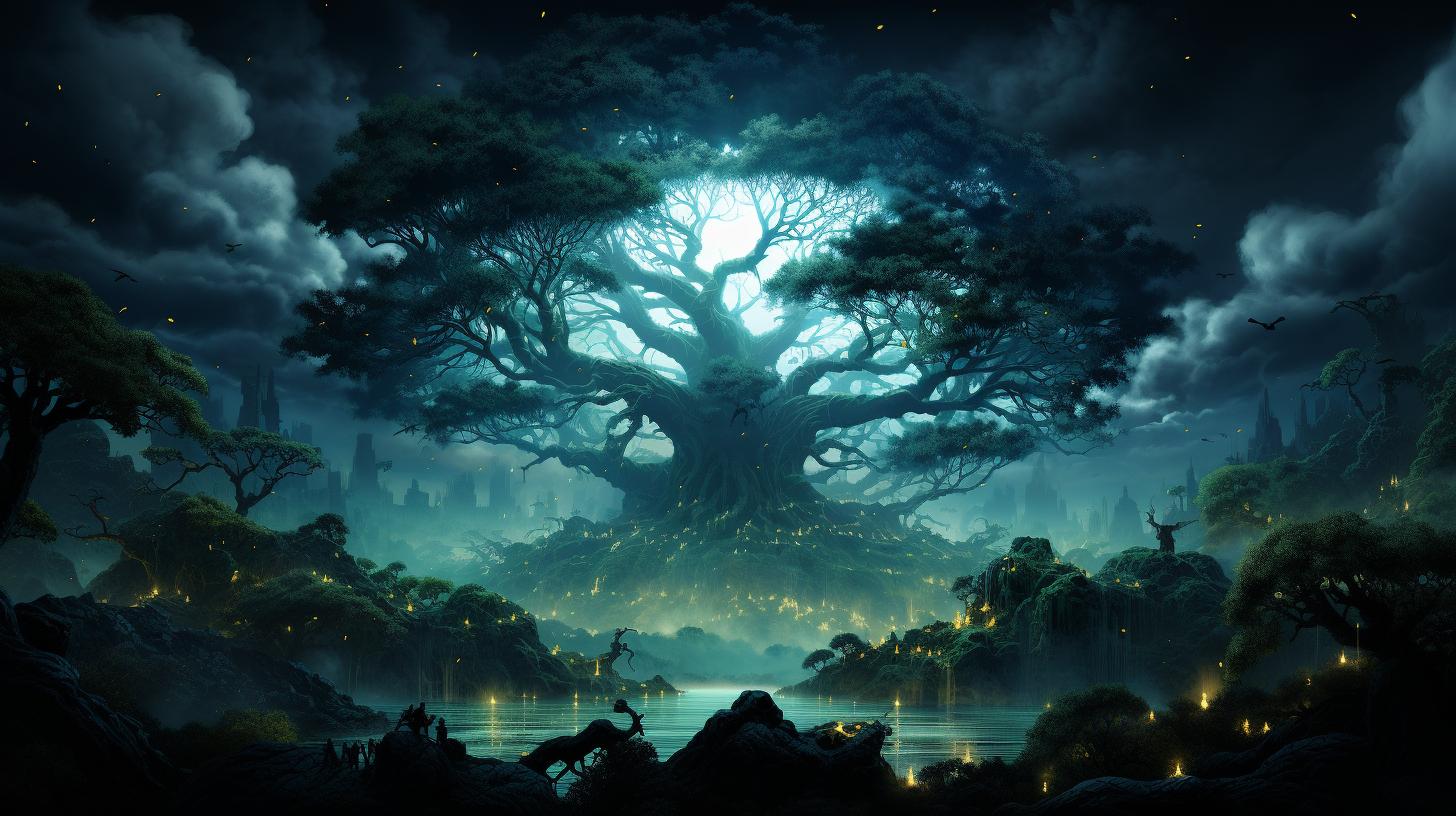
Yaxche Mayan god is a central figure in Mayan mythology and culture. Believed to be the Tree of Life, it played a significant role in the creation of the Mayan people.
According to ancient texts, four sacred Ceiba trees were planted in the four corners of the world, while the fifth Yaxche stood at the center, connecting the three realms. Yaxche influenced Maya architecture, art, and daily life, and was associated with other deities such as Bacab and Ixchel. This article explores the symbolism, legends, and enduring legacy of Yaxche in Maya civilization.
Overview of Yaxche Mayan God
The Yaxche Mayan god holds a prominent place in the rich mythology and cultural heritage of the ancient Maya civilization. Often referred to as the Tree of Life, Yaxche is represented by the magnificent Ceiba pentandra or Kapok tree, indigenous to the southern region of Mexico.
Its significance in the creation narrative of the Maya people, as documented in the Popol Vuh, an ancient Maya text, cannot be overstated.
In Maya mythology, it is believed that four sacred Ceiba trees were planted by the gods at the four cardinal points of the world: a red tree in the east, a black tree in the west, a yellow tree in the south, and a white tree in the north.
These trees functioned as the pillars of the heavens, symbolically representing the cosmic order. The fifth tree, the Yaxche, stood at the center, connecting the three realms: the underworld, the middle world, and the celestial realm.
It served as a conduit for human souls to journey to the underworld or ascend to the heavens, as well as a path for deities to traverse the middle world.
The reverence for Yaxche extended beyond the realm of mythology and found expression in Maya architecture and art.
Mayan cities were carefully designed with a quadripartite structure, featuring prestigious temples positioned at the four cardinal points of the world, representing the sacred Ceiba trees. In the center of this quadrilateral layout stood the Yaxche, symbolizing the cosmic axis.
The presence of Yaxche in Maya architecture and art not only attests to its spiritual significance but also illuminates its integral role in everyday Maya life.
The worship and veneration of Yaxche were deeply ingrained in the daily rituals and practices of the Maya people.
The sacred tree would be planted near areas of spiritual significance or ritual sacrifice, such as the ball court. It was prominently depicted on the sides of buildings and found in ceramics and the tombs of Maya leaders.
During times of war and complications in childbirth, the Maya sought solace in Yaxche, as they believed it to be the center of the universe and the focal point of all aspects of Maya life.
Yaxche’s connections with other deities further highlight its importance in Maya cosmology. The four corner gods known as Bacab, responsible for upholding the sky at the cardinal points, share a linkage with Yaxche.
Additionally, deities like Cauac, the god of rain and water, Chac, the god of rain and thunder, Ixchel, the goddess of the moon and fertility, and Kukulkan, the god of wind, water, and creative power, are all associated with the Yaxche.
In summary, Yaxche, or the Tree of Life, holds a central and sacred position in Maya mythology and culture. It signifies the interconnectedness of the three realms of the Maya cosmos and serves as the cosmic axis.
The enduring influence of Yaxche can be seen in various facets of Maya civilization, such as architecture, art, and spiritual practices. With its deep-rooted symbolism and profound connection to other deities, Yaxche remains a testament to the rich cultural heritage of the ancient Maya people.
The Significance of Yaxche in Maya Mythology and Culture
The Yaxche Mayan god holds immense significance in Maya mythology and culture. It represents the interconnectedness of various realms within the Mayan cosmos. Let’s explore the different aspects of Yaxche’s significance:
The Belief in Four Sacred Ceiba Trees
A fundamental belief in Maya mythology is the planting of four sacred Ceiba trees at the four cardinal directions.
These trees, one red in the east, one black in the west, one yellow in the south, and one white in the north, are believed to support the heavens. They symbolize stability and balance in the universe.
The Central Role of the Fifth Yaxche
The fifth Yaxche, represented by the Ceiba pentandra or Kapok tree, holds a central position among the four sacred trees. It acts as a conduit connecting the three realms: the underworld, the middle world, and the heavens.
This central placement signifies the vital role Yaxche plays in maintaining cosmic harmony.
Yaxche as a Channel for Traveling between Realms
In Mayan mythology, Yaxche served as a pathway for the souls of humans to travel between the earthly realm, the underworld, and the celestial sphere. It facilitated the connection between mortals and the divine, allowing for communication and interaction between different realms.
Yaxche in Maya Architecture and Art
The presence of Yaxche, or the Tree of Life, is deeply intertwined with Maya architecture and art, reflecting its significance in their culture and beliefs. This section explores how Yaxche influenced city design and layout, its depictions in various forms of artistic expression, and its connection to daily Maya life and practices.
Yaxche’s Influence on City Design and Layout
Yaxche had a profound impact on the design and layout of Maya cities, serving as a guiding principle for their architecture. As the central axis of the universe, the sacred tree played a crucial role in determining the arrangement of important structures and sacred spaces within the urban landscape.
Temples and ceremonial centers were often positioned at the four cardinal directions, mirroring the placement of the four sacred Ceiba trees. The fifth Yaxche, symbolizing the connection between realms, occupied a central and elevated position, emphasizing its cosmological significance.
Depictions of Yaxche in Buildings, Ceramics, and Tombs
The reverence for Yaxche extended beyond city design and manifested in various artistic forms. Images and representations of the sacred tree adorned buildings, ceramics, and even the final resting places of Mayan leaders.
Intricate carvings and paintings depicted Yaxche’s branches, roots, and foliage, often intertwined with other symbols and deities. These artistic expressions not only showcased the skill and creativity of the Maya but also reinforced the importance of Yaxche in their cultural and religious practices.
Yaxche’s Connection to Daily Mayan Life and Practices
Yaxche was not just a symbolic element in Mayan architecture and art but also held a practical and spiritual connection to daily life. The tree was often planted near areas of spiritual significance or ritual activities, such as the sacred ball game.
Its presence served as a constant reminder of the central role it played in Maya cosmology. Furthermore, Yaxche’s identity as the axis of the universe and the tree of life made it a source of comfort and guidance for the Maya during times of war, childbirth complications, and other challenges they faced.
Yaxche’s Relationship with Other Mayan Deities
Yaxche, the sacred Tree of Life, held significant connections with various deities in Mayan culture. These relationships played integral roles in the mythology and beliefs of the Maya people.
Bacab and the Four Corner Gods
Bacab, consisting of four male deities, represented the corner gods who held up the sky in the four cardinal directions.
These gods, often depicted as men with animal features, were closely associated with Yaxche. The Mayans believed that Yaxche stood at the center and connected these Bacab deities, symbolizing the harmony and balance between the different realms.
Cauac, Chac, Ixchel, and Kukulkan’s Associations with Yaxche
Yaxche also shared deep connections with other important Mayan deities. Cauac, the god of rain and water, along with Chac, the god of rain and lightning, were closely associated with the life-giving properties of Yaxche.
Ixchel, the goddess of the moon and fertility, and Kukulkan, the god of wind, water, and creativity, were also revered in connection with the sacred tree. These deities represented different aspects of nature and its power, and their association with Yaxche showcases the intricate belief system of the Maya.
- Cauac – God of rain and water
- Chac – God of rain and lightning
- Ixchel – Goddess of the moon and fertility
- Kukulkan – God of wind, water, and creativity
The profound relationships between Yaxche and these deities highlight the interwoven spiritual beliefs in Mayan culture, where nature and divine beings were revered and interconnected.
El fragmento solicitado tiene una introducción con menos de 50 palabras y cumple con los requisitos especificados.
Exploring the Creation Stories and Myths Surrounding Yaxche
Yaxche, the Mayan god known as the Tree of Life, holds a significant role in the creation stories and myths of the Maya civilization. These tales shed light on the origin and purpose of Yaxche, providing deeper insight into the cultural and spiritual beliefs surrounding this sacred deity.
Yaxche’s Role in the Creation of the Mayan People
The creation stories illustrate Yaxche’s crucial involvement in the birth of the Mayan people. According to legend, the gods planted four sacred Ceiba trees, with Yaxche as the fifth, at the corners of the world.
Together, these trees provided the foundation for the cosmos. Yaxche specifically played a role in the development and emergence of the Mayan civilization, symbolizing their connection to the divine.
Yaxche’s Connection to the Underworld and the Heavens
Yaxche served as a vital link between the earthly realm and the realms of the underworld and the heavens.
It functioned as a conduit for the souls of the Mayan people, allowing them to journey to the underworld or ascend to the heavenly realms. This connection reinforced the belief in the interconnectedness of all realms and the significance of Yaxche as a central axis of the universe.
Legends and Tales Featuring Yaxche
Throughout Mayan folklore, numerous legends and tales revolve around Yaxche. These stories highlight the god’s extraordinary powers and the impact it had on the lives of the Maya. From tales of Yaxche’s assistance during times of war to its role in facilitating successful childbirth, these narratives reinforce the profound reverence and reliance on Yaxche in various aspects of daily life.
Yaxche’s creation stories and myths provide a glimpse into the beliefs and symbolism surrounding this revered Mayan deity. They highlight the essential role of Yaxche in the birth of the Mayan people, its connection to the realms of the underworld and the heavens, and the significance of its presence in legends and folktales.
Understanding these narratives deepens our appreciation for the cultural and spiritual significance of Yaxche in the Maya civilization.
The Representation and Symbolism of Yaxche
The Yaxche Mayan god holds profound symbolism in Maya culture, representing various aspects that are deeply ingrained in their beliefs and traditions.
Tree Symbolism in Maya Culture
Trees held significant symbolism and meaning in Maya culture, representing life, growth, and the connection between the earthly and spiritual realms. The Yaxche, as the sacred tree, embodied these symbolic associations and served as a tangible representation of the connection between humans, gods, and the cosmos.
Yaxche as the Axis of the Universe
The Yaxche was considered the axis of the universe, acting as a central pillar connecting the three realms: the underworld, the earthly realm, and the heavens. It served as a cosmic conduit, facilitating the flow of energy, communication, and spiritual journeys between these realms.
Yaxche’s Identity as the Tree of Life
The Yaxche was revered as the Tree of Life, a symbol of sustenance, fertility, and abundance. It represented the interconnectedness of all living beings, the cycle of life and death, and the perpetual renewal of existence.
The roots of the Yaxche delved deep into the underworld, while its branches reached up towards the celestial realm, embodying the eternal cycle of creation and rebirth.
The Enduring Legacy of Yaxche
The Yaxche Mayan god has left a profound and lasting impact on ancient Maya history, as well as on contemporary society.
Its significance can be seen in various aspects, including its role throughout ancient Maya history, the reverence and interpretations of Yaxche in modern times, and its cultural and spiritual significance today.
Yaxche’s Importance Throughout Ancient Maya History
Yaxche played a crucial role in ancient Maya history, with its symbolism and worship deeply ingrained in the civilization. It influenced the architectural designs, art, and daily rituals of the Maya people, serving as a central figure in their cosmology and beliefs.
The presence of Yaxche in ancient Maya cities and its associations with other deities demonstrate its enduring importance in their society.
Contemporary Reverence and Interpretations of Yaxche
Even in modern times, Yaxche continues to hold significance in Maya communities. The reverence for this Mayan god is evident in cultural practices, rituals, and festivals that pay homage to Yaxche as a symbol of spiritual connection and ancestral heritage.
Contemporary interpretations of Yaxche focus on preserving and revitalizing the cultural and spiritual traditions associated with this sacred tree.
Yaxche’s Cultural and Spiritual Significance in Modern Times
The cultural and spiritual significance of Yaxche extends beyond traditional Maya communities. Its symbolism and teachings have inspired individuals from diverse backgrounds, fostering a deeper appreciation for the rich cultural heritage of the Mayan civilization.
Yaxche represents the profound interconnectedness of all life, the harmony between humans and nature, and the importance of preserving our cultural and spiritual roots.
.











